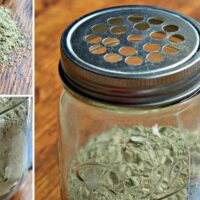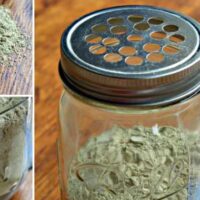Are you tired of dealing with pesky insects in and around your home? Instead of resorting to chemical-laden bug sprays and store-bought insect repellents, consider using peppermint as a natural alternative. Not only do insects despise the scent of peppermint, but it has also been proven effective in repelling a wide variety of pests. With a few simple steps, you can create your own peppermint-based solutions to keep your home bug-free.

Why Peppermint?
Peppermint is an unbearable irritant to most insects. In fact, the stick bug emits a milky substance with a peppermint scent to ward off predators. Peppermint is an effective natural repellent against beetles, caterpillars, fleas, flies, lice, mice, moths, roaches and more.
The Scientific Evidence
“A 2001 study by researchers at Auburn University tested the effects of mint oil on two of the most common species of cockroaches: American roaches and German roaches.
What they found is surprising—and great news for the millions of homeowners across the U.S. looking for an easy, safe, natural way to repel cockroaches.”
During each day of their 14-day experiment, the mint oil repelled 100% of the roaches. 100%! That’s a significant result.
Studies have also shown that peppermint oil can protect against mosquito bites for up to 150 minutes when applied to the skin!
Using Peppermint Around the Home
If you’re dealing with spiders, ants, mosquitoes, and other insects, try using 100-percent pure peppermint oil. You can find it at your local health or grocery store. Follow these simple steps to make the most of peppermint’s bug-repelling properties:
- Apply peppermint oil to a cotton ball and place it in areas where insects are frequently seen, such as window sills or near doors.
- Create a peppermint spray by mixing 5 to 10 drops of essential oil per ounce of hot water in a spray bottle. Use this mixture to spray down countertops, furniture, curtains, blinds, and hard-to-reach areas. Be sure to test in a small area first to ensure the oil doesn’t damage the items you want to spray.
- For outdoor use, apply the mixture to your skin, but be sure to test on a small patch of skin first, as some people with sensitive skin may find the oil irritating.
DIY Peppermint Insect Repellent (Option 2)
If you want to try another homemade peppermint solution, consider this simple recipe:
Ingredients:
- 10 drops of peppermint essential oil
- 16 oz. of water
Instructions:
- Mix 10 drops of peppermint essential oil with 16 oz. of water.
- Transfer the mixture to a spray bottle.
- Spray the mixture on countertops, furniture, blinds, and other areas where insects are present.
Safety Concerns with Conventional Insect Repellents
Most store-bought insect repellents contain DEET (N,N-diethyl-meta-toluamide), a chemical that has been linked to memory loss and other behavioral changes in rats after prolonged exposure. The Toxic Substances and Disease Registry has also listed eight deaths directly associated with DEET ingestion or topical application. By choosing natural alternatives like peppermint, you can effectively repel insects without exposing yourself or your family to potentially harmful chemicals.
Although Peppermint oil is a popular natural remedy for indoor pest control, as it is known to repel a variety of insects, including spiders, fleas, flies, lice, and moths. Its strong scent and natural insect-repellent properties make it an attractive alternative to chemical pesticides. However, when using peppermint oil for bug control indoors, it is essential to consider the safety concerns, especially if you have pets.
While peppermint oil is generally safe for humans, it can pose risks to pets, particularly cats and dogs. Cats are especially sensitive to essential oils due to their unique liver metabolism, making them more susceptible to toxicity from these oils. Ingestion or prolonged exposure to peppermint oil can cause adverse reactions in cats, such as vomiting, diarrhea, drooling, lethargy, and even tremors or seizures in severe cases. Dogs, while not as sensitive as cats, can also experience similar symptoms if they ingest or come into contact with high concentrations of peppermint oil.
To safely use peppermint oil for indoor bug control, take the following precautions:
- Dilute the oil: Always dilute peppermint oil with water or a carrier oil before using it as an insect repellent. A general guideline is to mix 10-15 drops of peppermint oil with 1 cup of water or carrier oil. This will help reduce the risk of adverse effects on pets.
- Use sparingly: When applying the diluted peppermint oil solution, avoid spraying it excessively or in areas where your pets frequently play, sleep, or eat. Focus on targeted areas where pests are likely to congregate, such as near doors, windows, and in corners.
- Store safely: Keep peppermint oil and any mixtures containing it out of reach of pets. Ensure that the containers are tightly sealed to prevent accidental ingestion or exposure.
- Observe your pets: Closely monitor your pets for any signs of adverse reactions after using peppermint oil for bug control. If you notice any unusual symptoms or behaviors, immediately discontinue use and consult your veterinarian.
While peppermint oil can be an effective and natural solution for indoor bug control, it is essential to prioritize the safety of your pets. By taking the necessary precautions, you can minimize the risks and keep your home free of both pests and potential hazards to your furry companions.
Looking for more healthy home options?
Truly Free Home Cleaning Kit! – This is essential oil based, all natural and eco friendly. I love these products. They work so well and Truly Free supports many positive causes. Highly recommend giving them a shot! 63% off now at this link!



